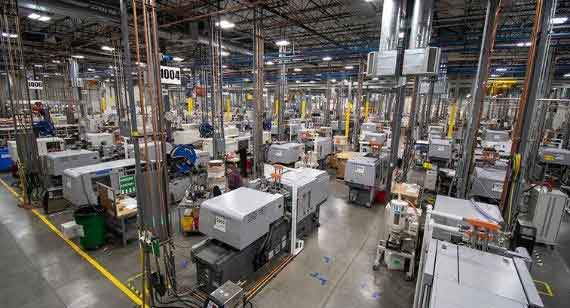Just in Time: Control Market Demand, Inventory, and Costs with On-Demand Manufacturing
As a supply chain manager, you continue to navigate the high seas of demand volatility, inventory uncertainty, mass customization, and tight deadlines. Many managers are finding fair winds and sailing successfully through various procurement challenges with just-in-time supply chains that minimize inventory requirements and maximize efficiency. This just-in-time approach is empowered by leveraging on-demand production capabilities from digital manufacturing suppliers like China Metal Parts.
This approach takes advantage of tech-enabled factories of the future that have automated traditional manufacturing methods such as machining, sheet metal fabrication, and injection molding, and have added new, non-traditional capabilities such as industrial-grade 3D printing (additive manufacturing). Digital manufacturing enables you to procure commercial-grade plastic and metal parts within days. This just-in-time approach is being used by supply chain managers at companies large and small, from automotive and aerospace OEMs to consumer electronics firms and medical device startups.

Benefitting from On-Demand Production
On-demand manufacturing solves demand volatility and inventory issues, and allows for mass customization, across the entire life cycle of a product.
Procuring parts on demand, without minimum order quantities (MOQs), helps you manage market or demand volatility, so you’re not tied to massive production forecasts. When demand spikes, you can get parts quickly. At the same time, on-demand sourcing allows you to lower overall inventory and warehousing costs. With less inventory, you don’t need to pay for storage and warehousing. Plus, you aren’t left with unwanted inventory if an order is cancelled.
On-demand production also makes it possible for you to meet current market demands that are much more customized than before. Instead of the mass production approach of the past, a low-volume and high-mix ratio of products requires companies to be more reactive. Examples? Think about user-centric products such as smartphones or medical devices. Often, these products need to be customized. Plus, product updates and new model introductions are frequent. Therefore, instead of needing millions of parts for something, companies may only need 10,000 of one item. Accordingly, on-demand manufacturing has the digital capacity and rapid turnaround capability to meet these mass customization needs.
Just-in-Time Management and 3D Printing
The speed and precision of additive manufacturing can be leveraged in a just-in-time supply chain scenario. In the recent past, this technology was mostly viewed and used as a prototyping application, and, certainly, that role continues. Indeed many companies have desktop 3D printers in-house for just this purpose. But industrial-grade 3D printing takes additive to a higher level of speed and quality. It ensures accuracy and repeatability for highly precise parts, and is especially geared for functional prototypes, complex designs, and, depending on a component’s function, for end-use production parts as well.
Further, the technology keeps significantly advancing. For example, at China Metal Parts, we now offer six distinct 3D printing processes that range from prototyping to production in both plastics and metals.
Ultimately, as a supply chain manager, you will continue to navigate challenging waters, that’s just part of the job. But charting a course with the help of digital manufacturing will make for a smoother sail.
Supply Chain is a regular look at issues and trends in supply chain management and planning.